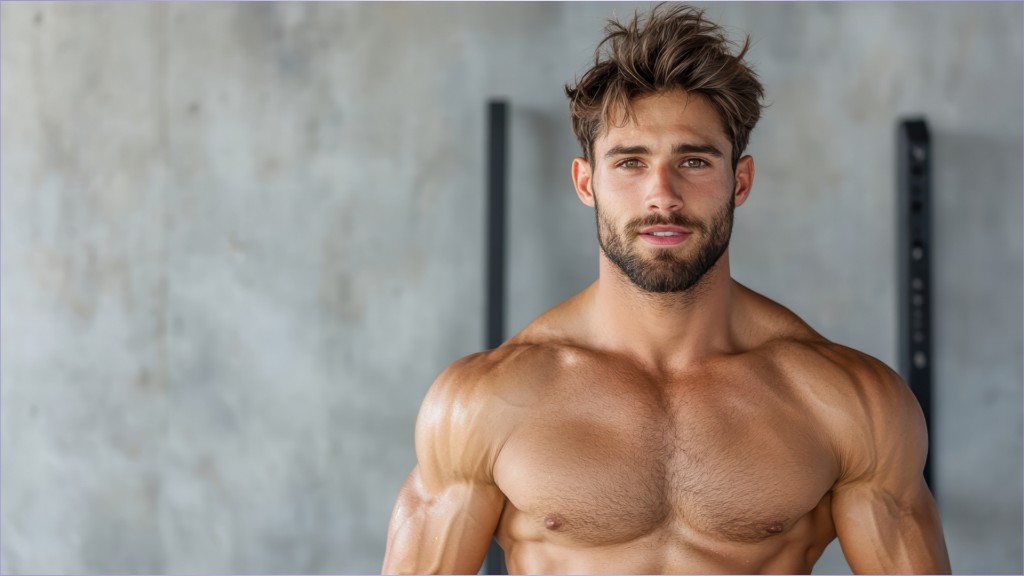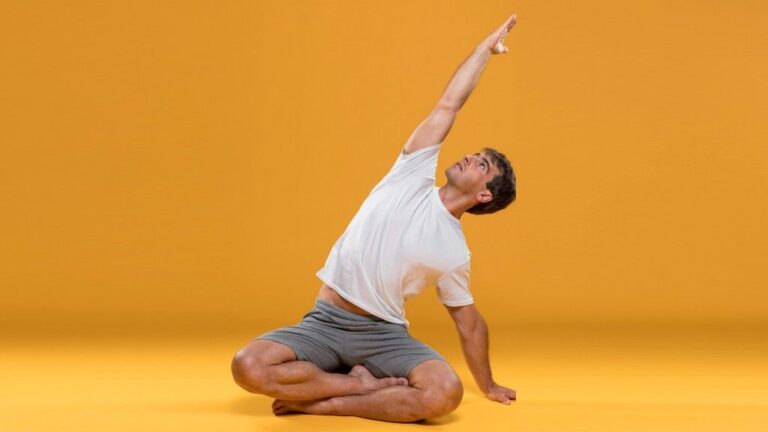Build a Bigger Chest With This Ultimate Machine Workout – When it comes to building bigger pecs, the chest press machine might be your go-to—but if you’re stuck on traditional fixed-path machines, you’re missing out on the full potential of your gains. Intermediate and advanced lifters know that variety, joint-friendly movement patterns, and functional strength are key to unlocking muscle growth while preventing injury.
That’s where cable machines, assisted dip machines, and other dynamic equipment come into play. These tools allow for a greater range of motion, constant tension, and natural movement patterns that mimic real-world activities—making them ideal for sculpting a stronger, more defined chest.
Ready to take your chest day to the next level? Below, we break down five machine-based exercises designed to build bigger pecs, boost functional strength, and keep your shoulders happy.
Table of Contents
1. Cable Crossover
The cable crossover is a game-changer for isolating the chest muscles while maintaining constant tension throughout the movement, creating an intense burn that promotes muscle growth. Unlike barbell presses, this exercise allows for a deeper stretch at the bottom and peak contraction at the top, making it ideal for sculpting your pecs.
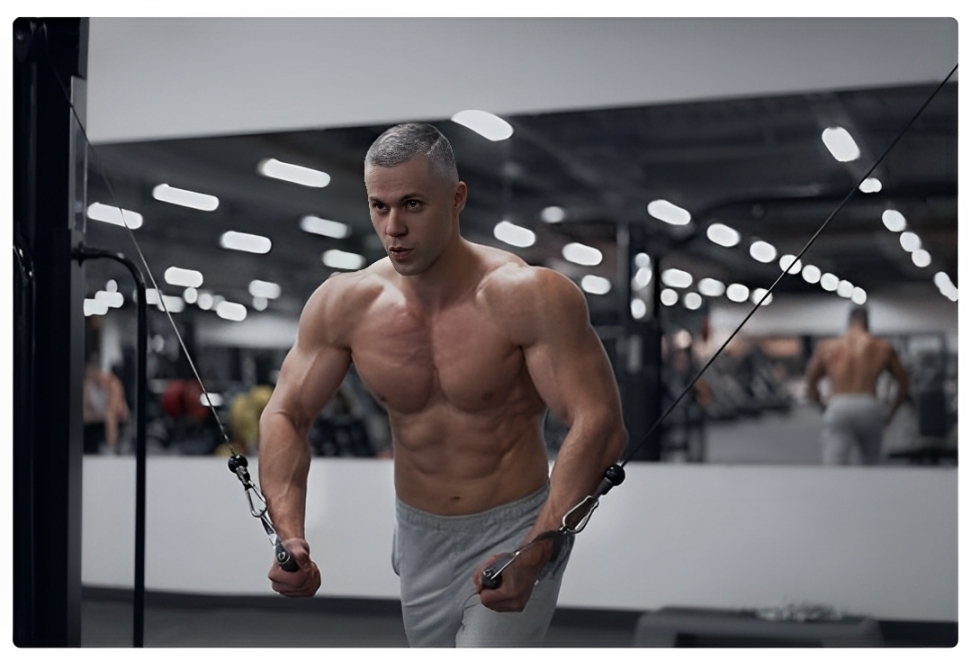
To perform it, attach D-handles to two high pulleys on a cable crossover machine and stand in the center with feet shoulder-width apart, knees slightly bent, and core engaged. Grab the handles with an overhand grip, step forward slightly to create tension, and bring your hands together in front of your body, squeezing your chest at the midpoint.
Also Read: Strong & Lean After 30: 7 Essential Strength Exercises For Female
Slowly return to the starting position, keeping control throughout the eccentric phase. Focus on the mind-muscle connection—visualize your pecs doing the work—and keep your shoulders down and back to avoid recruiting your upper traps. Aim for 3–4 sets of 10–12 reps to maximize hypertrophy.
2. Assisted Dip Machine
The assisted dip machine offers the benefits of heavy activation for the lower and middle chest without the joint strain often associated with traditional dips. This makes it a safer yet equally effective option for building bigger pecs.

Start by adjusting the weight stack to reduce resistance based on your strength level, then place your hands on the padded bars and step onto the platform. Lower your body by bending your elbows until your upper arms are parallel to the floor, leaning slightly forward to emphasize the chest over the triceps.
Push through your palms to extend your arms fully, squeezing your chest at the top. Avoid locking out your elbows completely to maintain tension in the pecs, and reduce the range of motion if you feel discomfort in your shoulders. Perform 3–4 sets of 8–10 reps for optimal results.
3. Incline Cable Press
Targeting the often-neglected upper portion of the pectorals, the incline cable press helps create a fuller, more balanced chest. Using cables instead of dumbbells or a barbell ensures continuous tension throughout the movement, maximizing muscle engagement.

Set both pulleys on a dual cable machine to chest height, attach single-grip handles, and stand in the center with a staggered stance for stability. Grab the handles with an overhand grip, step forward slightly to create tension, and press the handles forward and slightly upward, extending your arms fully while squeezing your chest.
Also Read: 5 Core Workout for Men Hits Every Angle of Your Abs
Return to the starting position under control, feeling a deep stretch in your pecs. Keep your elbows slightly tucked to protect your shoulders and imagine pushing the handles apart as you press to maximize chest engagement. Complete 3–4 sets of 10–12 reps for a stronger, more defined upper chest.
4. Chest Fly Machine
The chest fly machine is perfect for achieving a skin-splitting pump while isolating the pecs with minimal involvement from secondary muscles. Its guided path reduces stress on the shoulder joints compared to free weights, making it a safer option for targeted chest development.
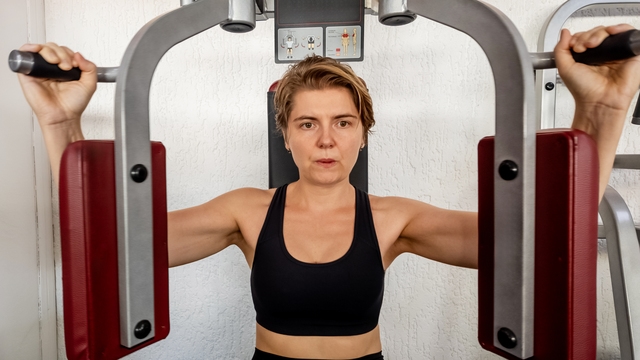
Sit upright with your back firmly against the pad and adjust the seat height so the handles align with your mid-chest. Grasp the handles with a neutral grip and start with your arms extended outward. Pull the handles toward each other in a wide arc, focusing on squeezing your chest as they meet in front of you.
Slowly reverse the motion, letting your chest stretch as the handles return to the starting position. Use a moderate weight to maintain form and avoid jerking the handles, pausing briefly at the midpoint to maximize contraction. Perform 3 sets of 12–15 reps for maximum effectiveness.
5. Seated Machine Chest Press
The seated machine chest press offers stability and precision, making it ideal for heavy lifting without compromising form. This machine is particularly useful for beginners transitioning to advanced lifts or those recovering from injury.
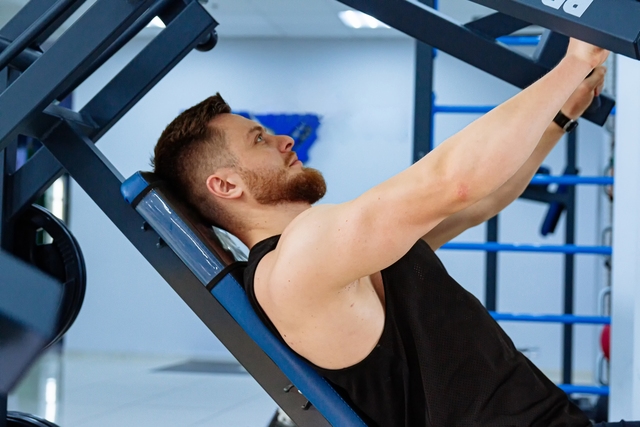
Adjust the seat height so the handles align with your mid-chest, sit with your back flat against the pad, and plant your feet firmly on the ground. Grip the handles with an overhand grip and press them forward until your arms are fully extended, squeezing your chest at the top.
Also Read: 5 Core Workouts to Power Up Your Strength
Slowly lower the handles back to the starting position, keeping your elbows at a 45-degree angle to your torso. Control the tempo—take 2 seconds to press and 3 seconds to lower—and focus on squeezing your pecs rather than relying on momentum. Aim for 3–4 sets of 8–10 reps to build controlled power and strength in your chest.

